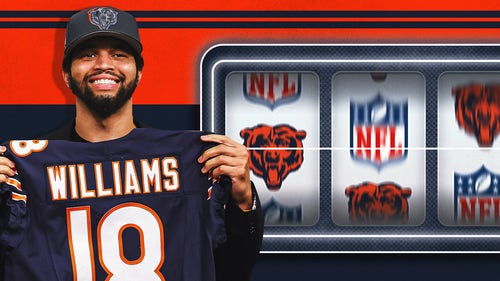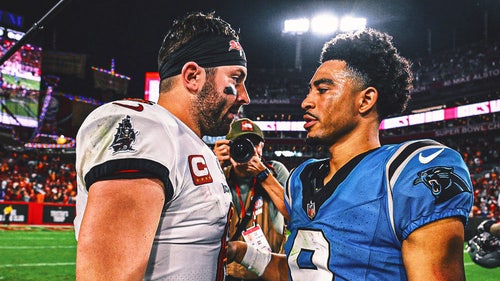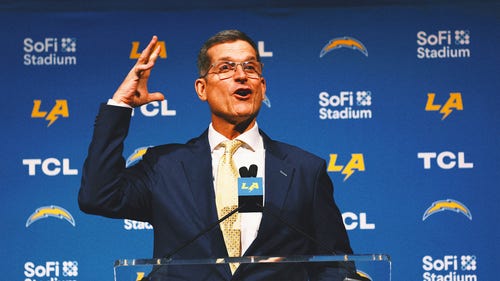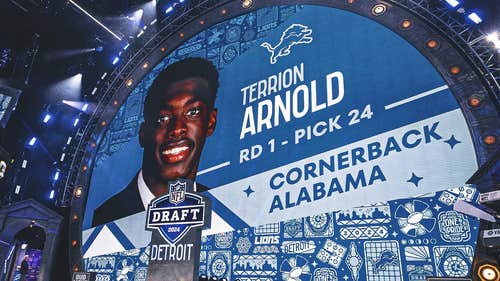





































































































































Pereira: Sorting through the wild finish at the end of the Rams' win over Seattle
There are 954 miles between the Edward Jones Dome in St. Louis to the NFL league offices in New York.
Those in attendance in Missouri were probably happy during the Seahawks-Rams game that it wasn't stopped to look at a critical play with one minute remaining in the game on FOX Sunday afternoon.
Those in Seattle, probably not so much.
Welcome to the world of replay.
First, the final score. St. Louis 28, Seattle 26.
Now for what many around the country were buzzing about at the end of the one of the biggest upsets of the season, the one-win Rams knocking off the defending Super Bowl champion Seahawks.
Here was the situation: St. Louis had the ball, third-and-one from its own 45-yard line with 1:14 left in the game. The Rams led 28-26. Rams running back Tre Mason carried the ball for 9 yards and then fumbled.
There was a mad scramble for the ball as it went into a pile. It was ruled that the Rams' Cory Harkey recovered the ball. But with most piles, there's usually no evidence of a clear recovery before it gets into the pile.
Seahawks coach Pete Carroll exploded on the sidelines because the play wasn't stopped by the officials to look at it. Twitter exploded everywhere else.
Dean Blandino, the NFL's vice president of officiating, tweeted out that based on the all of the available angles they looked at, New York officials made the decision not to stop the play because ball went into a pile without a clear recovery.
At end of #SEAvsSTL we looked at all available angles. No evidence of who recovered ball. Ball still loose and then went into pile.
— Dean Blandino (@DeanBlandino) October 19, 2014
That used to be the replay official's responsibility in the stadium, but effective this season, the league office in New York is now taking most of the responsibility for stopping plays, in reviewing plays -- and ultimately making the decisions in all replays.
By the way, I support and like the fact that the league is doing this.
But here is my issue with this play: The league said they looked at all available angles, but only one replay was shown before Rams quarterback Austin Davis came to the line and spiked the ball. There are a lot of cameras at a game, and in my opinion, you had to stop the game and take a look to see if there was anything else because it was the key play of the game.
However, I agree, the league office or the replay official at the game wouldn't have reversed the call on the field that the Rams recovered the ball.
But what would have been the downside? It was a key play. It could have given Seattle the ball back with a minute to go at its own 33-yard line, only needing a field goal to win the game.
I know the league is trying to cut down on the length of games, and the notion of why stop the game for two minutes when New York officials know they aren't going to reverse the call was in their thought process.
But the significance of getting the game times reduced a little sometimes overshadows the need the stop the game on critical plays, just to make sure there's not another available angle.
When I went on the broadcast to give my thoughts on the play, I wouldn't have changed my opinion that the call wouldn't have been reversed, but if it had been me in Blandino's role Sunday, I would have stopped it just to make sure there was no other video replay that showed anything else.
At least then, Pete Carroll, the Seahawks and their fans would have known that I took every step possible before declaring it the Rams' ball.
Then they could have yelled at me.
Mike Pereira's take on Luke Kuechly's ejection in Green Bay
Mike Pereira explains which hits on receivers are legal and which are not

2024 NFL Schedule Release: Date, when does the season start?

Caleb Williams, Bears shaking up the odds: 'Their ceiling is high if he excels'

NFC South schedule preview: Breaking down the division’s 2024 opponents

How Chargers’ WR remake reveals Jim Harbaugh’s organizational shift

Taking Command: How Adam Peters is reshaping football in Washington

Jayden Daniels on what he'll bring to NFL: 'Washington is getting a dog'

Travis Kelce lines up another TV job, joins new season of 'American Horror Story'

Lions stay true to their draft strategy as they become NFL's hunted

Why Titans first-round pick JC Latham can be ‘an All-Pro before you know it’


2024 NFL Schedule Release: Date, when does the season start?

Caleb Williams, Bears shaking up the odds: 'Their ceiling is high if he excels'

NFC South schedule preview: Breaking down the division’s 2024 opponents

How Chargers’ WR remake reveals Jim Harbaugh’s organizational shift

Taking Command: How Adam Peters is reshaping football in Washington

Jayden Daniels on what he'll bring to NFL: 'Washington is getting a dog'

Travis Kelce lines up another TV job, joins new season of 'American Horror Story'

Lions stay true to their draft strategy as they become NFL's hunted

Why Titans first-round pick JC Latham can be ‘an All-Pro before you know it’
